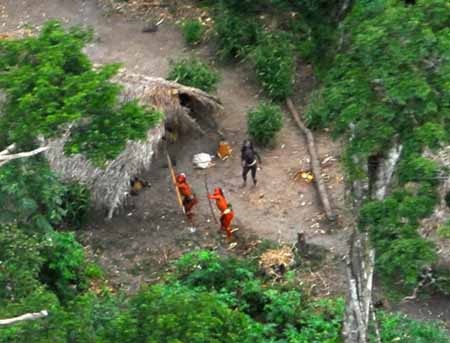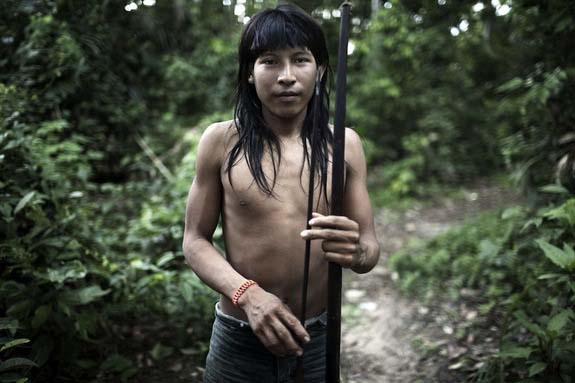
The Awa or Guaja are an endangered indigenous group of people living in the eastern Amazon forests of Brazil. Approximately 350 members survive, and 100 of those have no contact with the outside world. Their language is in the Tupi-Guarani family. Originally living in settlements, they adopted a nomadic lifestyle about 1800 to escape incursions by Europeans.
During the 19th century, they came under increasing attack by settlers in the region, who cleared most of the forests from their land. From the mid-1980s onward, some Awa moved to government-established settlements, but for the most part they were able to maintain their traditional way of life, living entirely off their forests, in nomadic groups of a few dozen people, with little or no contact with the outside world.
In 1982, the Brazilian government received a loan of 900 million USD from the World Bank and the European Union. One condition of this loan was that the lands of certain indigenous peoples (including the Awa) would be demarcated and protected. This was particularly important for the Awa because their forests were increasingly being invaded by outsiders. There were many cases of tribespeople being killed by settlers, but perhaps more significantly, the forest on which they depend was being destroyed by logging and land clearance for farming. Without government intervention it seemed very likely that the Awa and their ancient culture would become extinct.
However, the Brazilian government was extraordinarily slow to act on its commitment. It took twenty years of sustained pressure from campaigning organizations such as Survival International and the Forest Peoples Programme before, in March 2003, the Awa's land was finally demarcated.
During this time, encroachment on their land and a series of massacres had reduced Awa numbers to about 300, of whom only about 60 were still living their traditional, isolated, hunter-gatherer way of life.
In late 2011, illegal loggers burned an 8 year old Awa girl alive, after she wandered out of her village. The murder happened inside a protected area in the state of Maranhao. Luis Carlos Guajajaras, a leader from another people, said that the girl had been killed as a warning to other native peoples living in the protected area. According to the Indigenous Missionary Council about 450 indigenous people were murdered between 2003 and 2010. An investigation discovered the Awa camp in question had been destroyed by loggers.
In the News ...
Can World's 'Most Threatened' Tribe Be Saved? Live Science - April 25, 2012
A new international campaign hopes to save a group of people who have been dubbed "the most threatened tribe in the world" - the Awa tribe of Brazil - from encroaching outsiders who are gobbling up their land.
The Awa live in the Brazilian state of Maranhao on lands set aside for their hunter-gatherer lifestyle. But according to the tribal advocacy group Survival International, which is leading the new campaign, the tribe is increasingly under threat by illegal settlement and logging on their lands. One reserve set aside for the tribe, the Awa Territory, is one-third deforested, its trees stripped by illegal logging operations, some with sawmills operating only miles from Awa land.
"When the forest is destroyed, they either flee or they simply die," said Survival's field director Fiona Watson, who has worked with and interviewed many of the 360 surviving Awa who are in contact with society. On her last visit, she told LiveScience, "They were saying to me, 'We're suffering from hunger now.'"
The issue of indigenous people's land rights is an international one. Survival International estimates more than 150 million tribal people currently live in 60 countries worldwide. The most voiceless of these are uncontacted tribes, people who live without interaction with the outside world.
Uncontacted tribespeople are often romanticized as "primitive" people who aren't aware of the outside world, which is a myth, according to Survival. In fact, many are purposefully avoiding society after deadly run-ins with civilization in the past. Not only do clashes between native peoples and settlers sometimes result in violence, uncontacted people lack immunity to common diseases and can be felled by a simple flu virus.
Survival estimates that there are about 100 uncontacted Awa in addition to the 360 or so who have semi-settled in villages on their legally protected land. After first contact with the Awa in 1973, the Brazilian government has opened up the region where the tribe has long roamed. After iron ore was discovered in the area, the European Community and the World Bank even helped fund a railway and other developments in the region. "This acts like a magnet for settlers to pour in, and ranchers, so Awa land started to be invaded," Watson said.
The Awa's right to their land was formally recognized in 2005, making mining and other activities by outsiders illegal; but satellite photos of the forest reveal that these rights are not being honored. Illegal logging has left the scar of deforestation on the land. This is especially devastating to the Awa, who depend on the forest for their survival, Watson said. "When you talk to the Awa, it's just so clear how much the forest means to them," she said. "They just get everything from it." That includes food - babacu nuts and ace berries as well as fresh meat - and medicines and supplies, such as the resin of the macaranduba tree, which is used to make torches.
 Watch the Video of the Awa People
Watch the Video of the Awa People
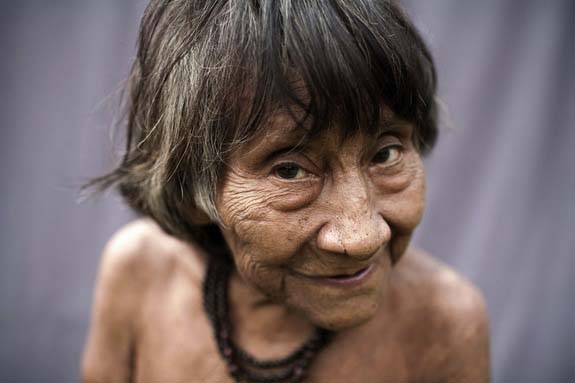
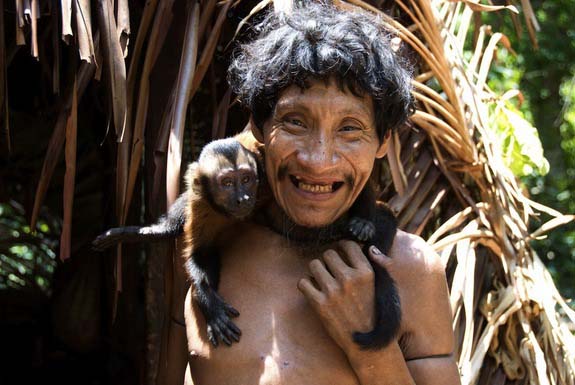
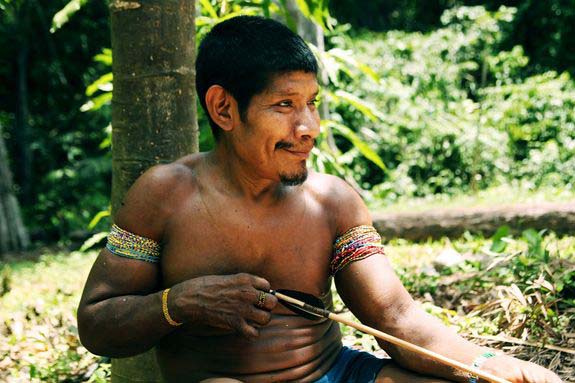
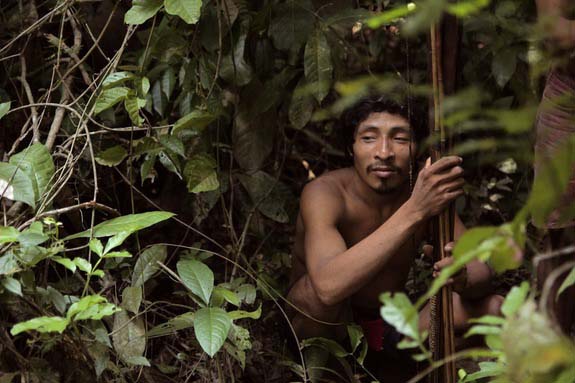
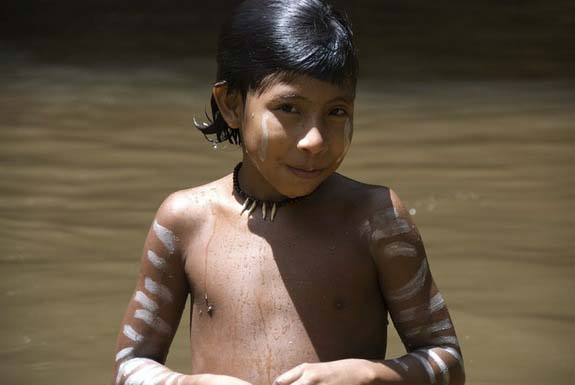
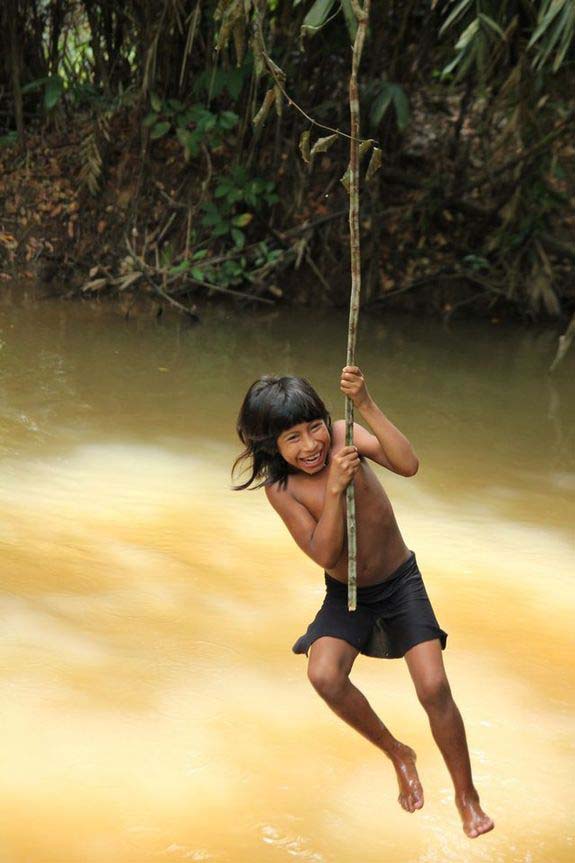
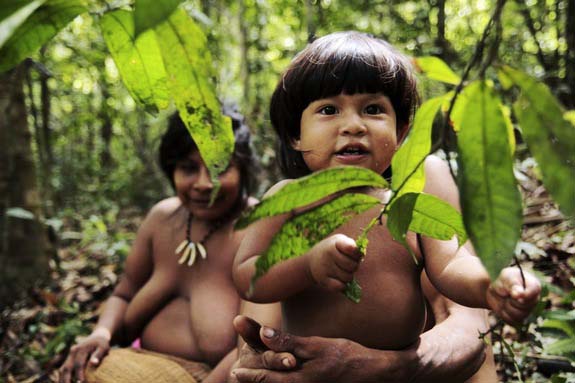
Existence of Uncontacted Amazon Tribe Confirmed Live Science - June 25, 2011
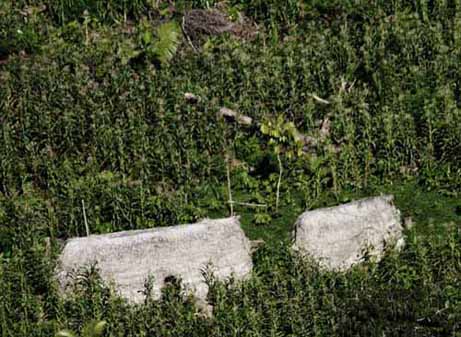
Brazilian officials have confirmed the existence of approximately 200 Indians who live in the western Amazon with no contact with the outside world. This uncontacted tribe is not "lost" or unknown, according to tribal advocacy group Survival International. In fact, about 2,000 uncontacted Indians are suspected to live in the Javari Valley where the tribe's homes were seen from the air. But confirming the tribe's existence enables government authorities to monitor the area and protect the tribe's way of life.
New images of remote Brazil tribe BBC - January 31, 2011
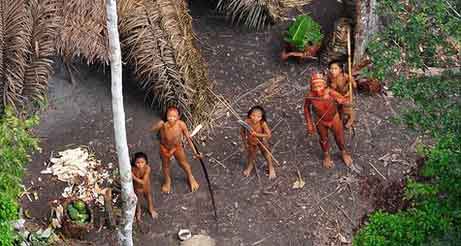
New pictures have been released of an isolated tribe living in rainforest on the Brazil-Peru border. Brazil monitors many such tribes from the air, and they are known as "uncontacted" because they have only limited contact dealings with the outside world. Photographs of the same tribe were released to the world two years ago. Campaigners say the Panoan Indians are threatened by a rise in illegal logging on the Peruvian side of the border.
"Lost" Amazon Complex Found; Shapes Seen by Satellite National Geographic - January 4, 2010
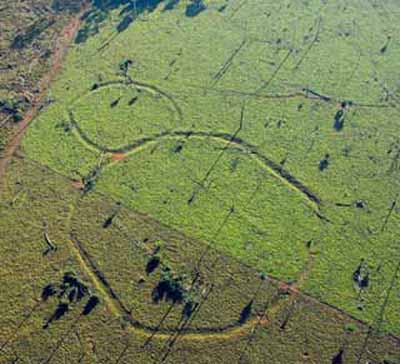
"Uncontacted" Amazon Tribe Actually Known for Decades National Geographic - June 20, 2008
 "Uncontacted" Tribes in Amazon National Geographic - June 7, 2008
"Uncontacted" Tribes in Amazon National Geographic - June 7, 2008
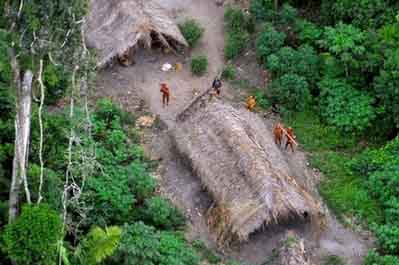
Photos Spur Debate On Protecting "Uncontacted" Tribes National Geographic - June 3, 2008
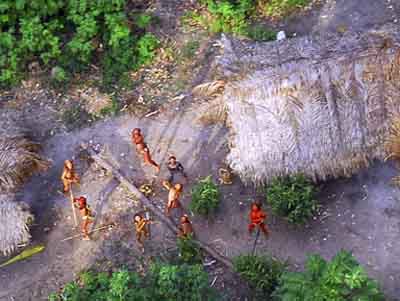
"Uncontacted" Tribe Seen in Amazon National Geographic - May 30, 2008
